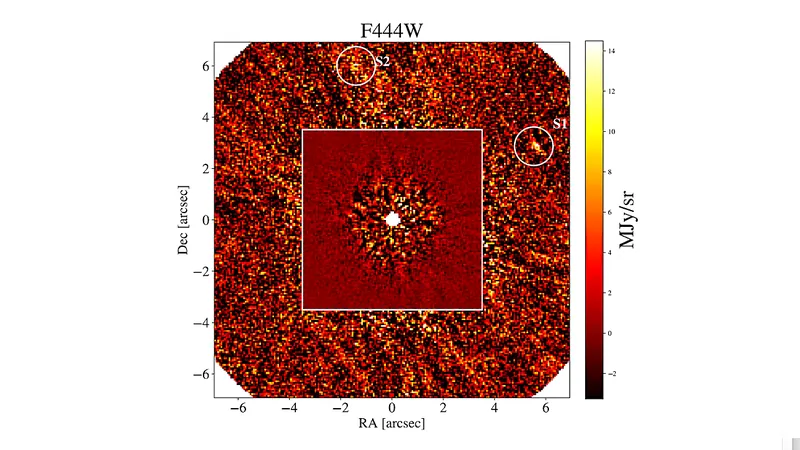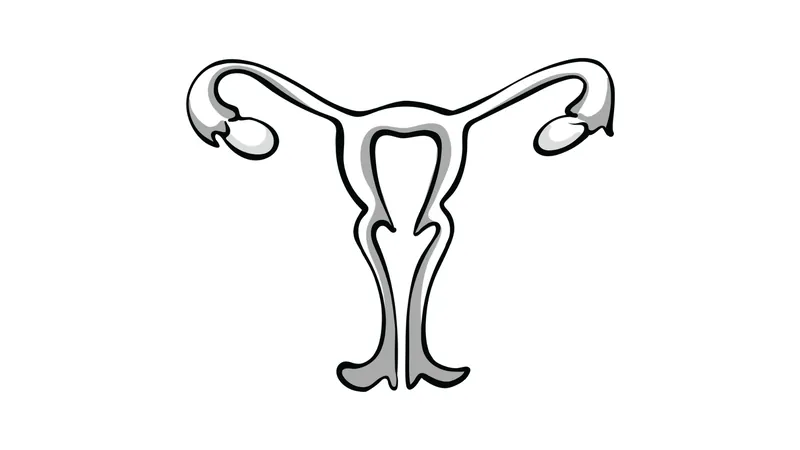
Astronomers Unveil New Findings in the Search for Planets Orbiting Vega Using the James Webb Space Telescope
2024-10-23
Author: Mei
Introduction
In a groundbreaking study, astronomers have turned their sights on one of the most well-known stars in the night sky, Vega (α Lyrae), utilizing the cutting-edge capabilities of the James Webb Space Telescope (JWST). Located approximately 7.7 parsecs (about 25 light-years) from Earth, Vega is surrounded by an impressive debris disk that has captured the attention of astrophysicists.
Observations and Findings
The research highlights the impressive coronagraphic observations obtained via NIRCam, which achieved remarkable contrast levels of 3×10^-7 at 1 arcsecond (7.7 astronomical units), 1×10^-7 at 2 arcseconds (15 au), and approximately 5×10^-8 Beyond 5 arcseconds (38 au). These measurements correspond to potential masses of less than 3, 2, and 0.5 times that of Jupiter, considering the system's estimated age of 700 million years.
Intriguing Objects
Notably, two intriguing objects were identified in the outer regions of the MIRI-observed debris disk, around 48 astronomical units from Vega. One of these objects, detected by MIRI, appears to be extended and has a spectral energy distribution resembling that of distant extragalactic sources. The second object also displays an extended appearance in the NIRCam data, raising intriguing possibilities about its origins.
Planetary Candidates and Sensitivity Levels
The research, led by a team of notable astrophysicists including Charles Beichman and Geoffrey Bryden, presents a complex portrait of Vega's environment. While eight additional objects were discovered within a 60-arcsecond radius of Vega, none exhibited the properties typically associated with planet candidates. The observations reached a sensitivity level consistent with expected Jeans Mass limits, suggesting that deeper observations with contrast levels lower than 10^-8 are indeed achievable, potentially unveiling a wealth of unseen objects, including planets smaller than Saturn.
Impact of Larger Planets on Disk Structure
Amidst these discoveries, the study raises vital questions about the implications of larger planets (over 0.3 MJup) on the debris disk's structure. According to the findings, such sizable planets could disrupt the delicate disk formation detected at MIRI wavelengths.
Conclusion
This research emphasizes the JWST's pivotal role in advancing our understanding of planetary systems beyond our own, shedding light on the complexities of Vega and its planetary prospects. The findings not only expand our knowledge of stellar environments but also pave the way for future explorations that could reveal even more about the universe's hidden gems.
Stay Tuned
Stay tuned for more astronomical breakthroughs, as scientists continue to unravel the mysteries of our cosmos!


 Brasil (PT)
Brasil (PT)
 Canada (EN)
Canada (EN)
 Chile (ES)
Chile (ES)
 España (ES)
España (ES)
 France (FR)
France (FR)
 Hong Kong (EN)
Hong Kong (EN)
 Italia (IT)
Italia (IT)
 日本 (JA)
日本 (JA)
 Magyarország (HU)
Magyarország (HU)
 Norge (NO)
Norge (NO)
 Polska (PL)
Polska (PL)
 Schweiz (DE)
Schweiz (DE)
 Singapore (EN)
Singapore (EN)
 Sverige (SV)
Sverige (SV)
 Suomi (FI)
Suomi (FI)
 Türkiye (TR)
Türkiye (TR)